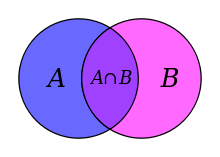Axiom schema
In mathematical logic, an axiom schema (plural: axiom schemata) generalizes the notion of axiom.
Formal definition
An axiom schema is a formula in the language of an axiomatic system, in which one or more schematic variables appear. These variables, which are metalinguistic constructs, stand for any term or subformula of the system, which may or may not be required to satisfy certain conditions. Often, such conditions require that certain variables be free, or that certain variables not appear in the subformula or term.
Finite axiomatization
Given that the number of possible subformulas or terms that can be inserted in place of a schematic variable is countably infinite, an axiom schema stands for a countably infinite set of axioms. This set can usually be defined recursively. A theory that can be axiomatized without schemata is said to be finitely axiomatized. Theories that can be finitely axiomatized are seen as a bit more metamathematically elegant, even if they are less practical for deductive work.
Examples
Two very well known instances of axiom schemata are the:
- induction schema that is part of Peano's axioms for the arithmetic of the natural numbers;
- axiom schema of replacement that is part of the standard ZFC axiomatization of set theory.
It has been proved (first by Richard Montague) that these schemata cannot be eliminated. Hence Peano arithmetic and ZFC cannot be finitely axiomatized. This is also the case for quite a few other axiomatic theories in mathematics, philosophy, linguistics, etc.
Finitely axiomatized theories
All theorems of ZFC are also theorems of von Neumann–Bernays–Gödel set theory, but the latter is, quite surprisingly, finitely axiomatized. The set theory New Foundations can be finitely axiomatized, but only with some loss of elegance.
In higher-order logic
Schematic variables in first-order logic are usually trivially eliminable in second-order logic, because a schematic variable is often a placeholder for any property or relation over the individuals of the theory. This is the case with the schemata of Induction and Replacement mentioned above. Higher-order logic allows quantified variables to range over all possible properties or relations.
See also
Notes
References
- Corcoran, John (2008-09-21). "Schema". Stanford Encyclopedia of Philosophy.
- Corcoran, J. 2006. Schemata: the Concept of Schema in the History of Logic. Bulletin of Symbolic Logic 12: 219-40.
- Mendelson, Elliot, 1997. Introduction to Mathematical Logic, 4th ed. Chapman & Hall.
- Potter, Michael, 2004. Set Theory and its Philosophy. Oxford Univ. Press.
